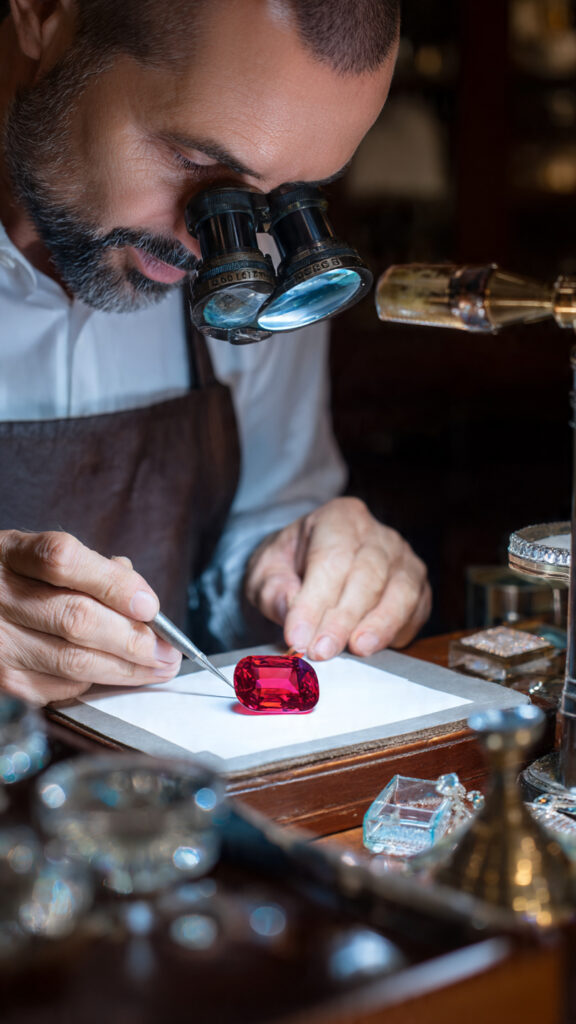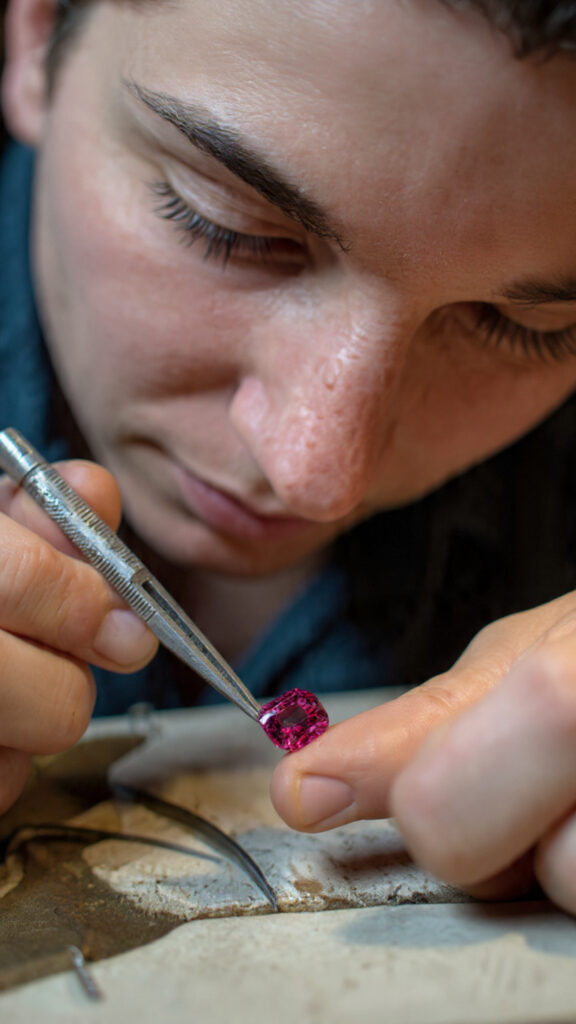Ruby (Manik) is among the top ten most expensive and attractive gems of the planet. Because of its bright red color and its association with the Sun, it has value both as an astrological item and as an ornament. However, with the alarming rate at which the market is being flooded with synthetic, heated, and glass-filled rubies, it has become a prerequisite that each buyer should be able to identify a real ruby stone. If you ever buy one for making jewelry or for astrological benefits, this guide will work as a medium between you and the seller to help you distinguish which ruby is the real and which is the fake.

1. Check the Color Tone
Color is the factor that weighs the most when it comes to spotting an authentic ruby.
Real rubies are characterized by a rich, deep red color and it is common to refer to their color as pigeon blood red. The color is neither too bright nor too dull but just vibrant. On the other hand, imitation or lab-created rubies may look overly perfect, too red, or even unnaturally uniform. If there is a pinkish or light red color in the stone, it might be a low-grade ruby or a spinel.
2. Look for Natural Inclusions
One cannot find a single real ruby gemstone that is free of inclusions because rubies are minerals that come from deep within the earth.
Very small crystals, light fingerprints, or needles (rutile) may be seen.
A flawless stone, especially if it is cheap, is probably a fake one.
Bubbles of gas inside the stone are almost always an indication of glass-filled or a fake ruby.
You should be using a magnifying glass (10x magnification) to look at the stone closely.
3. Hardness Test
On the Mohs hardness scale, ruby is rated 9, making it very strong and durable.
An authentic ruby is not going to be scratched in a metal or glass surface easily.
If the area is easily scratched then it is not a natural ruby.
(Please, do not try harsh scratch tests on your own; have it done by a gemologist.)
4. Observe the Stone Under Different Lights

A genuine ruby price may appear slightly different when it is viewed under natural sunlight or artificial light.
In daylight: The stone maintains its red color but appears to be glowing naturally.
Artificial light: There may be a slight change in color but the ruby should still look saturated.
If the color changes drastically or the stone looks too shiny, then it probably is a fake.
5. Verify Origin and Treatment through Certification
By far the most dependable method to confirm the authenticity of a ruby is a laboratory-issued gemstone report.
Consider labs such as:
- GIA
- IGI
GRS
Gem labs approved by the government
If a certificate is issued, it will mention details like the ruby’s origin, clarity, and whether it has been heated or not.
Conclusion
Determining if a ruby stone price is real involves mainly the analysis of color, clearness, hardness, and natural inclusions. Nevertheless, the surest way to authenticate a ruby is to buy it from reputable sellers and always request a certified report of the gemstone. Armed with the proper knowledge, you are then able to purchase a real ruby that is not only stunning and sturdy but also carries incredible astrological benefits.
Recommend0 recommendationsPublished in Uncategorized





